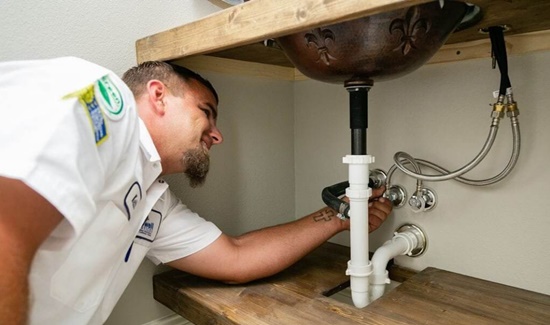Violating the code will can also result in some serious
difficulties when you are trying to sell the house or when making major
renovations.
Here are the lists of the ten most common code contraventions.
Illegal and improper materials
By using some materials during
your fixes will place you in the violation of the plumbing codes. Rubber
fittings, corrugated piping and some other materials will work, but for different
reasons, it will not be up to code. Before installing any kind of new fittings,
piping, or any other components or parts, research what types of plumbing
materials may possibly work better—and also which will be in a code violation.
Incorrectly installed bathroom or kitchen sink traps
Incorrectly
installing or using the wrong type of any will be considered a code violation.
Shun from using S-traps because these traps, which do not include venting, are
obsolete and almost always in violation of code.
Improperly size drainage piping
For any kind of drain,
the piping has to be in a particular size. Normally, if it is in violation of the
plumbing code, it is because it’s too small to its function or a drain that it
is attached to. It is also likely to swing far in some other direction, but, use
piping that is too big. When you replace the piping, be sure that the size is
within the plumbing code limits.
Pressure relief valves of the water heaters improperly plugged or installed
The pressure or the temperature relief valve, usually called a “P
and T valve” is the average safety feature on the water heater. When the pressure
or the temperature inside the water heater becomes too high, this water heater
will then later explode. This P and T valve stops that by discharging water.
But the problem is: When a P and T valve do its job, or merely leaks because of
age, there are some people that fix the drip thru plugging the valve. This is not
just a violation of the code —it will lead to a fatal explosion.
Not permitting enough space around the toilet
There has
to be enough clearance opening around any toilet for it to become comfortable
while using. Specific clearance minimums can differ from place to place, so you
will need to make some researches before installing or moving a toilet. This may
also apply to some other bathroom appliances and furniture like sinks and cabinets.
Also, when shifting the cabinet, make sure you are using the appropriate screws
to assemble them.
Inaccessible or insufficient cleanout
Cleanouts are the
access points that permit the plumbers and the homeowners to unclog and get
into the drains. Any plumbing method needs to be styled with the sufficient
number of simple accessible cleanouts. If you are making major alterations to plumbing
or drains, be sure that they are in their proper locations.
Using the sewer cleanout as the drain
The cleanout of
the buildings or the house’s main sewer line will not be applied as a drain. Generally,
you must keep this sewer cleanout potted up and then only open it when you have
to clear the clog in the major sewer line.
Nonfunctional Water Shutoff
When the water shutoff is
not working because it is broken, then it will violate the plumbing code. The final
thing you wanted is the water running when doing your DIY installation.
Incorrect Venting
The plumbing needs to contain properly
vented traps in maintaining the barrier between the sewage system and living
spaces. Venting may be wrong in some ways, including the flat venting, the horizontal
venting beneath the flood rim or there are totally no venting. Any of these may
simply be one code violation.
Drainage Pipe Sloping
The drainage pipe needed to
slope a particular amount to keep the water from flowing and preventing clogging.
The correct minimum slope differs from place to place, and can be as small as
1/16 inches per foot.



Comments
Post a Comment